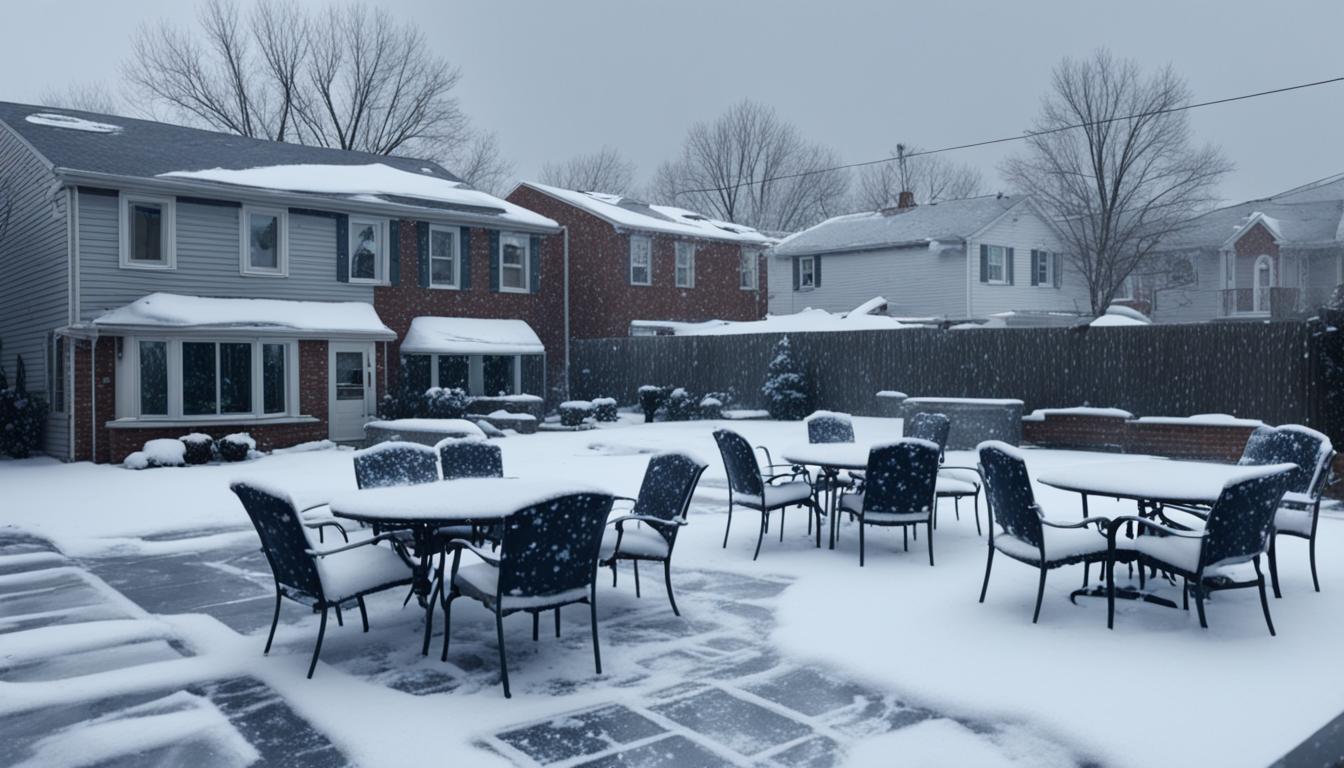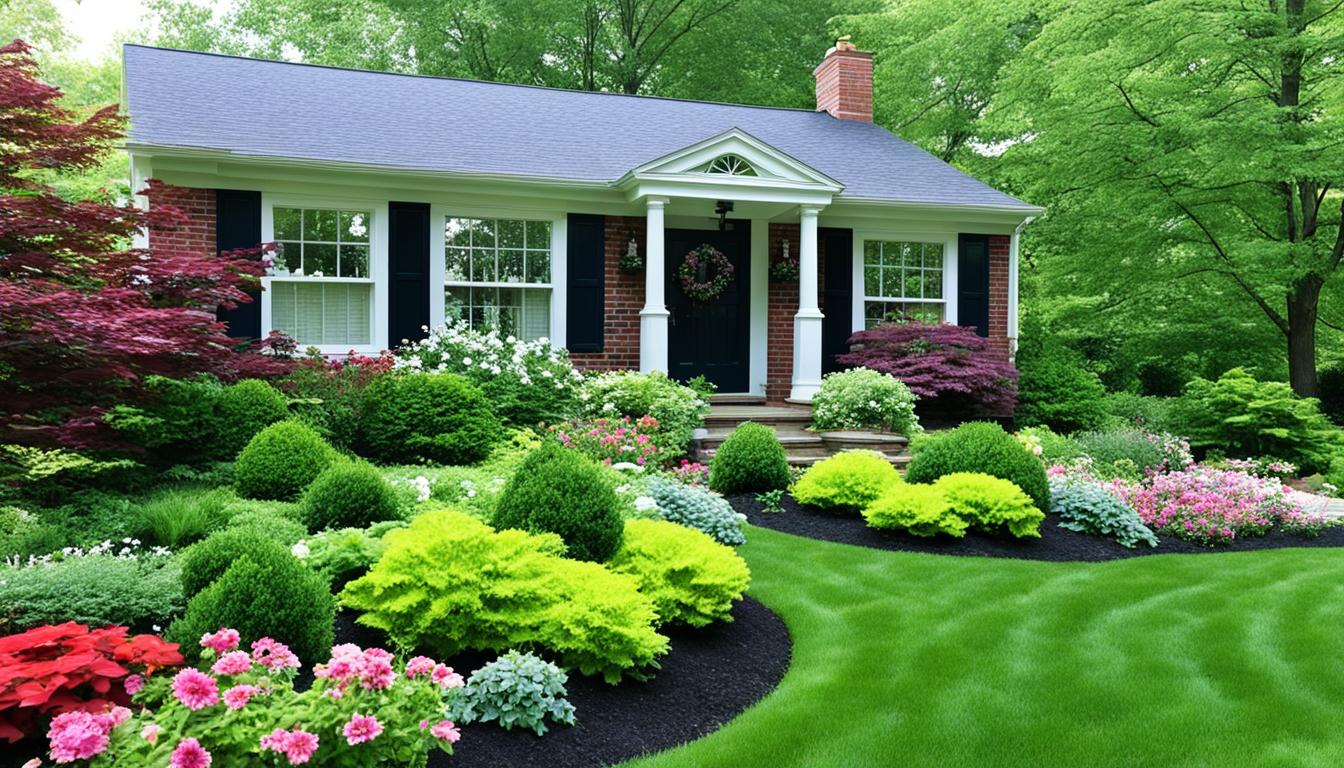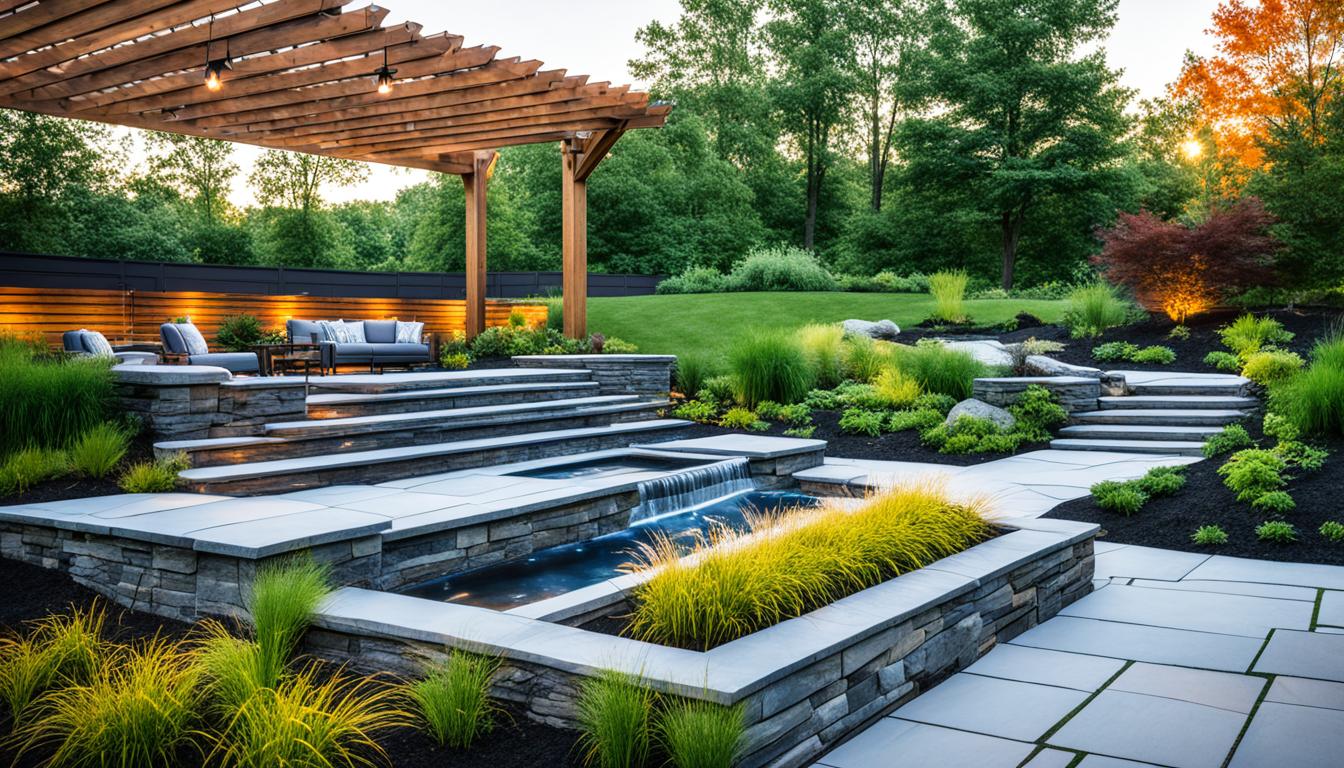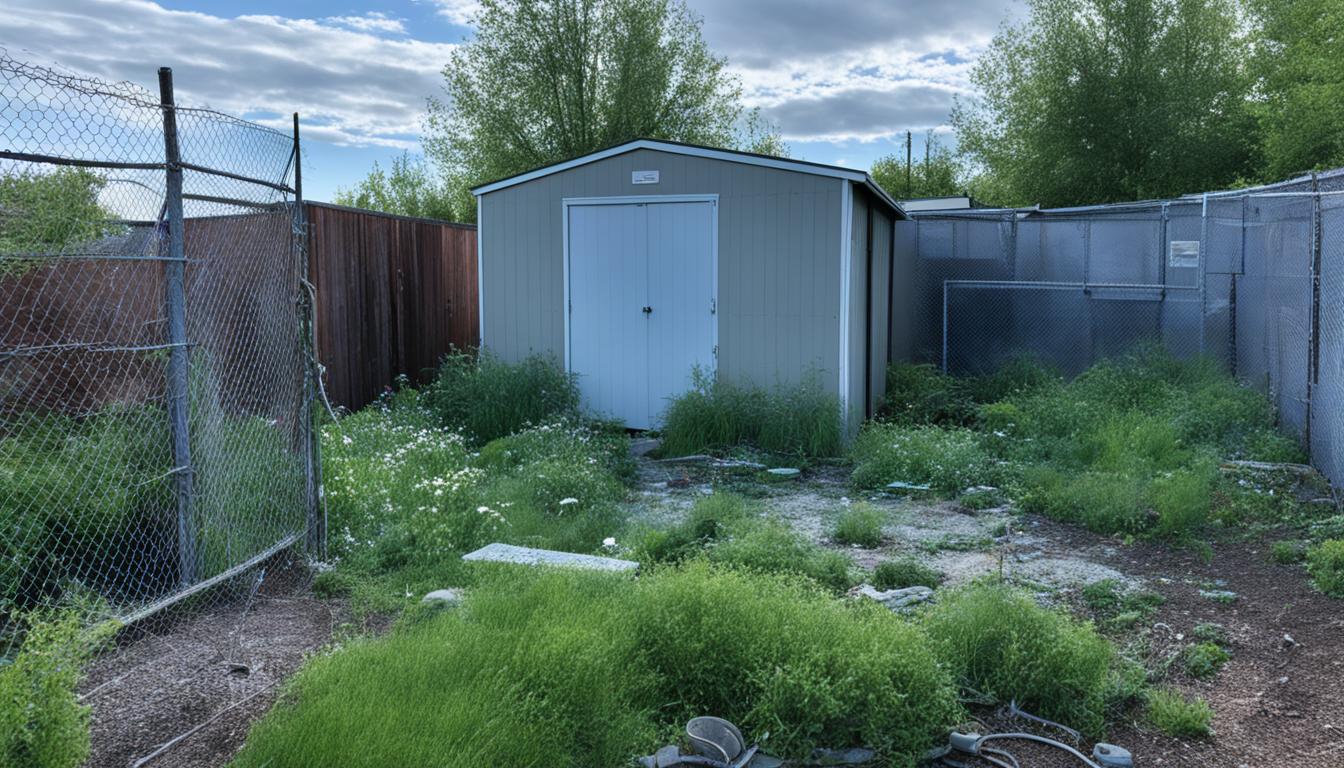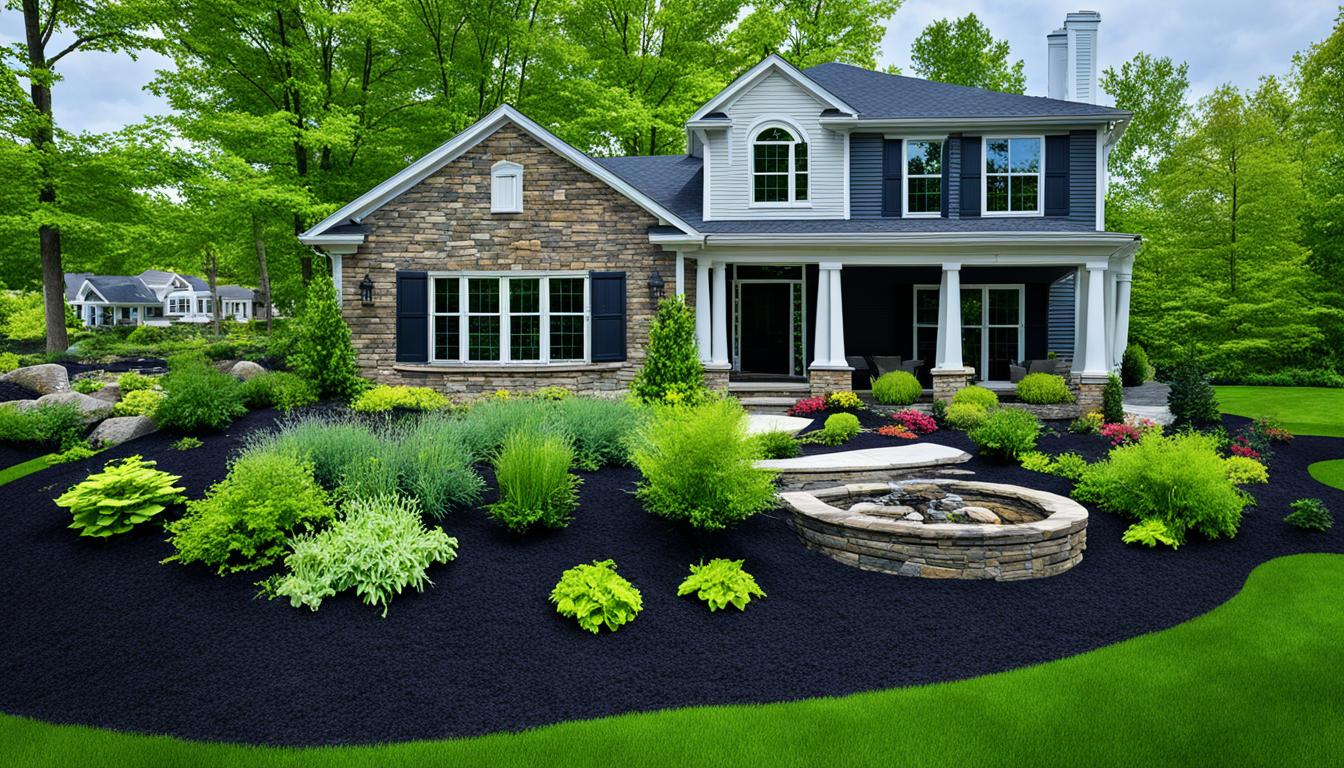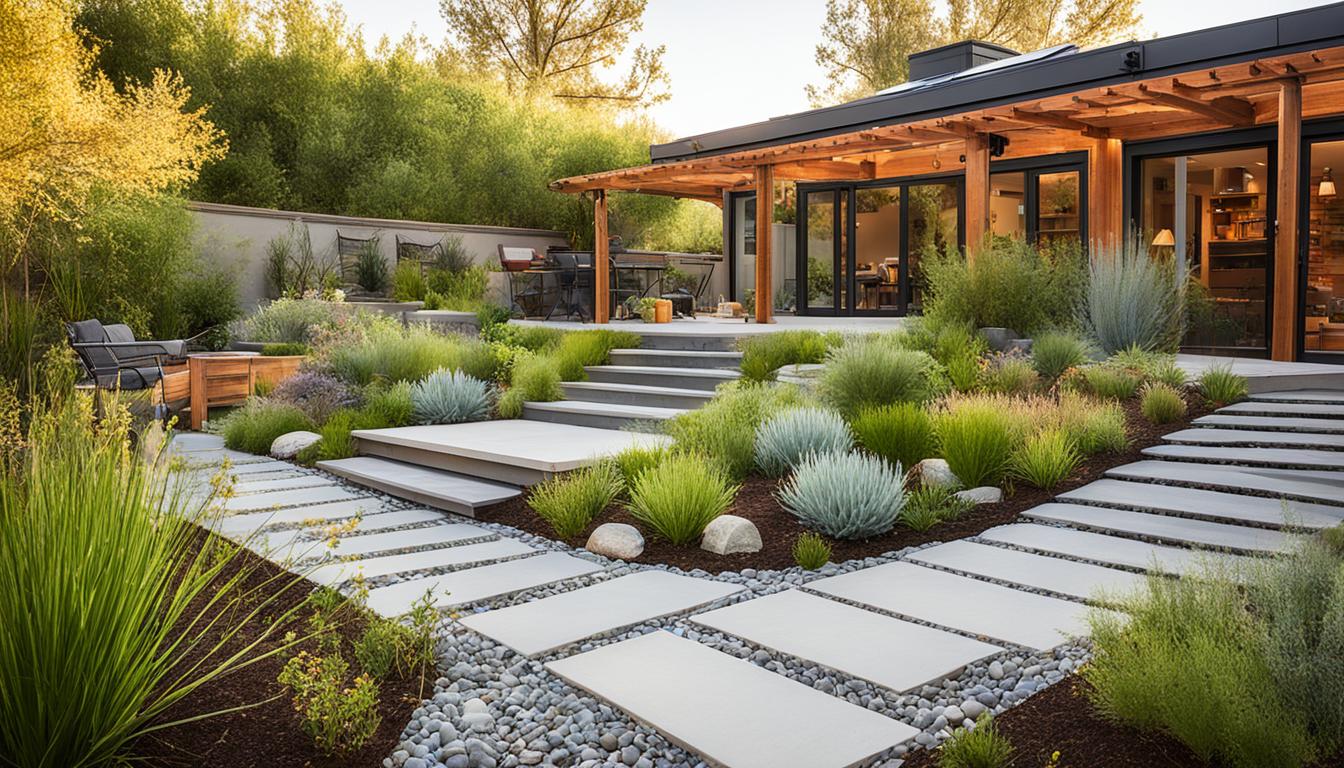Did you know that selecting the right plants for your outdoor space can have a significant impact on its overall appearance and sustainability? In fact, studies have shown that well-designed landscapes not only enhance the visual appeal of a property but also increase its value by up to 20%. Creating a stunning garden design that is both aesthetically pleasing and environmentally friendly requires careful attention to detail and expert knowledge in landscape design.
Key Takeaways:
- A well-designed landscape can increase the value of a property by up to 20%.
- Choosing the right plants is essential for creating a visually appealing and sustainable outdoor space.
- Working with a professional landscape designer can provide invaluable assistance in selecting the perfect plants for your garden design.
- Expert tips and guidance can help you create a sustainable landscape that minimizes water usage and promotes biodiversity.
- Consider factors such as climate, soil conditions, and maintenance requirements when choosing plants for your outdoor space.
Creating Stunning Outdoor Spaces with Landscape Design
In this section, we will explore how landscape design can transform your outdoor living spaces into stunning retreats. A well-planned backyard design and thoughtful hardscape features can elevate the aesthetics and functionality of your outdoor environment.
When it comes to outdoor living spaces, such as patios and decks, strategic design choices can make all the difference. Consider incorporating comfortable seating areas, outdoor kitchens, and cozy fire pits to create an inviting atmosphere for gatherings and relaxation. By blending nature with practicality, your backyard can become an extension of your home’s living space.
Backyard design is another crucial aspect of creating a captivating outdoor environment. Take advantage of natural elements like trees and shrubs, and carefully select the right plants to enhance the beauty of your space. A professional landscape designer can help you choose plants that thrive in your specific climate and are low-maintenance, ensuring a stunning landscape year-round.
Additionally, hardscape design plays a significant role in adding structure, function, and visual appeal to your outdoor spaces. Incorporating features like stone pathways, decorative walls, and water features can create a cohesive and harmonious design. Hardscaping also provides an opportunity to define different zones in your outdoor area, such as dining areas, lounging spaces, and garden beds.
In conclusion, a well-executed landscape design can transform your outdoor spaces into stunning havens. By considering outdoor living spaces, backyard design, and incorporating hardscape features, you can create a beautiful and functional environment that enhances your overall outdoor living experience.
Sustainable Landscaping: A Greener Approach
When it comes to creating an outdoor space that is not only beautiful but also environmentally friendly, sustainable landscaping is the way to go. By implementing sustainable practices, you can reduce water consumption, minimize maintenance requirements, and support the local ecosystem. One popular approach to sustainable landscaping is known as xeriscaping.
Xeriscaping is a landscaping method that focuses on designing landscapes that require minimal water usage. This is achieved by selecting plants that are native to the region and are well-adapted to the local climate. These plants are often drought-tolerant, meaning they can thrive with little to no supplemental irrigation. By choosing drought-tolerant plants for your landscape, you can significantly reduce water consumption and create a more sustainable outdoor space.
In addition to selecting the right plants, sustainable landscaping also involves efficient irrigation systems and proper soil management. By using technologies such as drip irrigation and installing rainwater harvesting systems, you can further minimize water waste and ensure that your landscape receives just the right amount of moisture it needs to thrive.
Benefits of Sustainable Landscaping
- Water Conservation: Sustainable landscaping helps conserve water by reducing the need for irrigation and maximizing its efficiency.
- Lower Maintenance: By choosing plants and design elements suited to the local climate, you can minimize the need for excessive maintenance tasks.
- Eco-Friendly: Sustainable landscaping practices promote biodiversity, reduce the use of harmful chemicals, and support the health of the surrounding environment.
- Cost Savings: By reducing water consumption and maintenance requirements, sustainable landscaping can lead to long-term cost savings.
By embracing sustainable landscaping practices, you can not only create a beautiful outdoor space but also contribute to a greener and more sustainable future. So, when planning your next landscaping project, consider the benefits of xeriscaping and make a positive impact on the environment.
Conclusion
In conclusion, professional landscape design plays a crucial role in selecting the right plants for your outdoor space. By working with a professional, you can harness their expertise, create stunning outdoor living spaces, and adopt sustainable landscaping practices.
Whether it’s enhancing your backyard design, incorporating hardscape elements, or embracing eco-friendly approaches like xeriscaping, a professional landscape designer can guide you in transforming your outdoor environment into a lush and visually appealing oasis.


